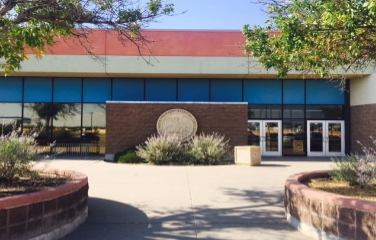Albuquerque youth programs have been putting a dent in juvenile crime referrals in recent years. The number of juvenile cases was cut in half between 2009 and 2016.
According to the New Mexico Children, Youth and Families Department (CYFD ) 2016 report, a delinquent referral results from an act committed by a youth, that would be designated as a crime under the law if committed by an adult. The delinquent referral client is an individual who may have committed multiple crimes but is only counted once in the system.

In 2009 there were 19,997 delinquent referrals involving 14,904 clients. In the most recent data from 2016, the number of delinquent referrals had dropped to 9,757 involving 7,659 clients. That amounts to a 51.2% decrease in referrals and a 48.6% decrease in referral clients.
“The decrease in juvenile crime referrals is due to the Division of Juvenile Justice System’s efforts to reform from a correctional/punitive system to a rehabilitative one,”said CYFD Director Tamera Marcantel. “This new focus provides better services to address the individual needs of clients”, she said.
“The change in strategy is working”, Marcantel said.
Fewer youth are entering Juvenile Justice Services and those that do are generally less likely to offend again, she said. The programs in place have lead to decrease in referrals as well as a decrease in recidivism.
“Our field services (juvenile probation) has experienced a steady decline in the number of referrals they receive due, in part, to the implementation on the Juvenile Detention Alternatives Initiative (JDAI),” Marcantel said, referring to the new rehabilitation model.
CYFD in recent years has also improved probation officer caseloads by limiting the number of clients that each juvenile probation officer (JPO) can have. The average caseload has decreased from 40-50 clients per officer to 10-15 each.
“The smaller caseloads provide an opportunity to inspire greatness in our JPO’s to be more involved in developing relationships with our clients, to spend more time on case management/coordination, and monitoring compliance with court orders to ensure accountability and provide for public safety,” Marcantel said.
The main goal is to focus on improving the quality of life for youth who encounter the juvenile justice system, she said. The mission of the facilities and the programs are to keep children safe and to prepare them to be contributing members of society.
Partly the way it works is that at the time of a juvenile’s arrest, Multidisciplinary Teams (MDT’s) prepare plans to maximize ways for youth to transition back into the community through either reintegration programs, juvenile justice facilities or linkages to community-based services.
“We offer both high school and postsecondary education, behavioral health services/therapy, substance abuse treatment, and a wide array of programming opportunities that include culturally appropriate services” Marcantel said.
According to the JJS Annual Report, there are three reintegration facilities, 28 probation and parole offices, twelve detention centers, and three JJS facilities in New Mexico. The Desert Hills Center for youth, New Day, and the Residential Treatment Centers for Troubled Boys in New Mexico are some of the facilities that incorporate residential and rehabilitation services.

“We hope that these facilities in New Mexico and the therapy methods we offer at the juvenile center help youth learn how to handle certain situations. Having a positive person constantly with you helps create a model to follow and help reduce criminal behavior,” said David Dahm, a correctional officer at the Bernalillo County detention center.
The larger communities in New Mexico have more referrals. In FY16, it was Bernalillo County that had the most referrals in New Mexico at (2,481), Dona Ana (1,564), San Juan (990), Santa Fe (796), and Sandoval (790).
“To help reduce the number of referrals, The Bernalillo County Juvenile Detention Center offers different programs and tools to help juveniles understand their actions and emotions,” said Tracy Ronquillo a Corrections officer at the center, who works with juveniles aged 10 to 17.
“Family issues such as having a broken family, single parent or separated families, frequent fights between parents, criminal parents or psychological problems in parents can be the most important reason behind juvenile delinquency,” Ronquillo said. “Other contributions include economic problems in the family. Often being poor can lead to youth getting involved in criminal activity.”
According to the Centers for Disease Control and Prevention (CDC), children with history of child abuse and neglect are 1.5 times more likely to use illicit drugs, especially marijuana. Marijuana possession is one of the top 15 offenses committed by juveniles.
A National Institute of Justice study showed that being abused or neglected as a child increased the likelihood of arrest as a juvenile by 59%, which will also go on to increase the likelihood of adult criminal behavior by 28% and violent crime by 30%. Many of the troubled youth can turn to different facilities to help fix their behaviors and not continue their criminal paths.
“We have a lot of programs that have been found to be very successful,” Ronquillo said. “There is a ropes obstacle course, Equine Assisted Psychotherapy, and dog therapy offered. There is also a licensed independent social worker and mental health workers on staff.”
Ronquillo has seen these types of therapies help youth overcome their struggles, she said. Ronquillo recalled one child who came from a family who abused drugs, and in turn was arrested for drug possession. The child exhibited signs of anger and resentment, as well as trouble with trusting individuals, she said.
“Dealing with this kind of environment for the child also impaired their reasoning skills,” Ronquillo said. “The child showed problems with typical problem-solving strategies, leading them to often act irrationally.”
In this case the youth was in the Bernalillo facility for about a year and received dog therapy to help with anxiety and calming behaviors — as well as one on one therapy, Ronquillo said. This ultimately improved the child’s behavior and made it possible to with relatives after getting out of the facility, she said.
“Through these facilities we hope to get youth the help they need and to deter them from committing crime in the future while being there for them through the process,” she said.
For more follow Jazzy Zama , Sarah Ihlefeld and Andrew Lucero on Twitter.